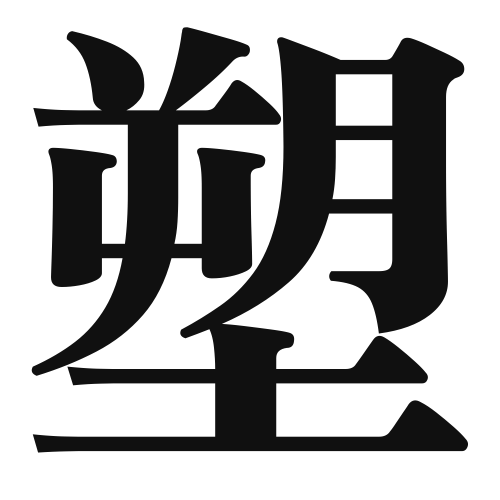1. Overview of Meaning
The kanji “塑” (pronounced “so” in Japanese) primarily means “to mold” or “to shape.” It is often associated with the act of creating or forming objects, particularly in the context of art and craftsmanship.
2. Formation and Radical
Formation of the Kanji: The kanji “塑” is a phonetic-ideographic character (形声文字), which means it combines both a meaning component and a phonetic component. The left part, “土” (meaning “earth” or “soil”), indicates a connection to materials, while the right part, “素” (which relates to “element” or “basic”), contributes to the pronunciation.
Radical: The radical of “塑” is “土,” which signifies earth or soil, reflecting the material aspect of molding and shaping.
3. Examples of Usage
Common Words and Phrases: Some frequently used words that include “塑” are:
- 塑像 (そぞう, sozou) – sculpture
- 塑造 (そぞう, sozou) – molding or shaping
Example Sentences in Daily Conversation:
- 彼は粘土で塑像を作っています。
(かれはねんどでそぞうをつくっています。)
(He is making a sculpture out of clay.) - この技術を使って、私たちは新しい製品を塑造できます。
(このぎじゅつをつかって、わたしたちはあたらしいせいひんをそぞうできます。)
(Using this technique, we can mold new products.)
4. Synonyms and Antonyms
Similar Kanji: A similar kanji is “造” (ぞう, zou), which also means “to create” or “to make,” but it often refers to construction or manufacturing rather than molding.
Antonyms: An antonym of “塑” could be “壊” (こわす, kowasu), which means “to break” or “to destroy,” representing the opposite action of shaping or forming.
5. Cultural and Historical Background
Connection to Japanese Culture: The concept of “塑” is deeply rooted in Japanese art, particularly in traditional crafts such as pottery and sculpture. The ability to mold materials is highly valued in Japanese aesthetics.
Proverbs and Idioms: While there may not be specific proverbs that directly use “塑,” the idea of shaping one’s destiny or character is a common theme in Japanese culture, often expressed through various sayings that emphasize the importance of personal effort and creativity.
